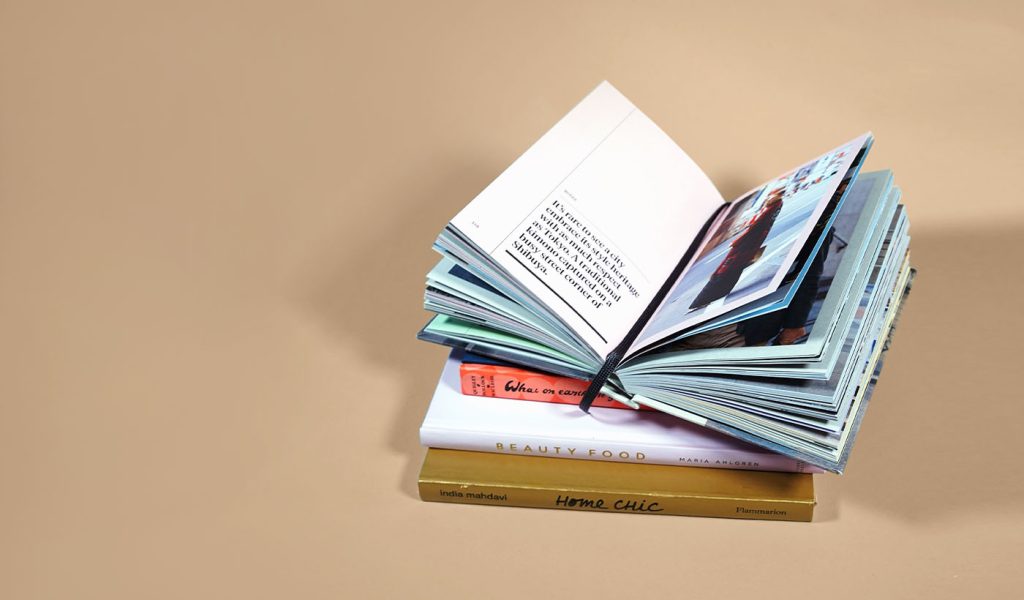Popular book genres to inspire your next book
If you’re here, you probably already know that authors who understand the nuances of popular book genres find it much easier to write bestsellers, connect with readers, and promote their work. In fact, we think that finding the right genre and topic within it is nearly half the battle of writing a list-topping book!
When you know what readers (and reviewers) expect of your book, you’ll have what you need to decide your tone, style, content, format, and even length and price point. Correctly selecting your genre is also critical when marketing your book—you need to know where your book fits in the existing market and who will be interested in reading it.
Today, there are literally thousands of book genres listed on Amazon, including continuously emerging new categories and perpetually evolving legacy genres and sub-genres. But don’t worry. We’re breaking down the most popular book genres so you can hone in on which might be perfect for you.

What is a book genre?
At the most basic level, a book genre is a category of books. Writers and readers have been grouping books by genre since the beginning of written literature, usually based on similarities in plot, structure, characters, narrative devices, and other elements that draw readers into the story.
For readers, genres provide context into what to expect from a particular novel or book, helping them discover books that best align with their interests and curiosities. And for authors, as mentioned above, book genres provide a framework for producing and marketing your work.
Genres may be as broad as romance or as specific as queer Gothic horror. But no matter the genre, they’re all initially segmented into two very general categories: fiction and nonfiction. From there, books get dialed into many more categories—mystery, fantasy, romance, science fiction, self-help, memoir, autobiographies, and children’s books. In addition, many book genres include subgenres that further specify the category and may overlap.
Let’s dive into the most popular book genres and how to define each.

Popular fiction genres
Fiction comes from the author’s imagination—rather than actual events, facts, or people. From horror to graphic novels, fiction writing can take many shapes. They can occur in the present, past, or future and include fantastical or realistic settings. While fiction authors usually intend to entertain, you can also use this creative book genre to explore multifaceted themes and complex ideas.
1. Romance
Widely known as one of the bestselling book genres, romance novels center on passionate, romantic relationships between characters. Romance has been around for centuries, tracing its origins back to medieval literature and blooming in the 18th and 19th centuries. Romance usually explores themes like love, passion, and commitment—but the genre can overlap with others like fantasy, thrillers, and poetry.
Romance is right for you if you want to write about the inner emotional life of characters, share a rollercoaster of tension and conflict, and provide a satisfying resolution (or cliffhanger!). Some of the world’s most popular romance authors include Nora Roberts, Jane Austen, and Nicholas Sparks. When readers pick up a romance novel, they can expect to read about the ups and downs of romantic relationships and the journey to find true love.
Don’t forget to explore its many subgenres: historical romance, young adult (YA) romance, erotic romance, and romantic suspense, to name a few that usually top the charts.
2. Fantasy
This genre is shaped by mystical and otherworldly settings that are often very different from our reality. The fantasy genre has its roots in ancient mythology and legend, often emphasizing magical or supernatural themes. Like romance, it also took root in the 18th century and remains a popular fiction book genre to this day.
If you love world-building, imaginative settings, a sense of wonder, magic, and elaborately-detailed stories—look no further. Famous fantasy authors include Howl’s Moving Castle‘s Diana Wynne Jones and Lord of the Rings’ J.R.R. Tolkien. Fantasy is a genre that has no limits to creative storytelling. Readers can be transported to a world of wonder and taken on a journey of adventure, utopia, and discovery.
3. Science fiction
Sometimes overlapping with fantasy, sci-fi takes readers to worlds with unrecognizable technologies and new scientific discoveries. It’s a genre that came into its own in the 19th century, with H.G. Wells and Jules Verne making their names as its defining sci-fi authors.
Science fiction books usually feature advanced technology with a focus on real (or real-ish) science. So when readers pick up your science fiction book, they’ll expect to be transported to a place where they can explore the possibilities and implications of a new technological landscape or interplanetary setting. Some of the most popular science fiction authors include Neal Stephenson of Snow Crash and Isaac Asimov of I, Robot.
4. Horror
Horror is an especially popular book genre that aims to elicit the reader’s fear, anticipation, and dread by using supernatural characters, paranormal elements, and psychological terror. With roots as far back as ancient Greece, the horror genre has shocked audiences for centuries and is ripe with folklore and legends.
When writing horror, you’ll want to emphasize anguish, shock, and the unknown—plus a healthy dose of suspense. Some famous horror authors include Stephen King, Dean Koontz, and H.P. Lovecraft, all of whom are experts in building dread over hundreds of pages. Readers who engage in a good horror novel can expect an unpredictable and terrifying journey into an author’s dark world.
5. Thriller
Thrillers are a popular genre characterized by their fast-paced, high-stakes plots, often rooted in adventure, crime, and espionage. This genre gained popularity over the past few decades, with origins dating to the crime novels of the early 20th century.
Key elements of a thriller include suspense, unpredictability, and a sense of urgency and danger. To write an excellent thriller, you’ll need to develop a strong protagonist, a believable villain, twists and turns, plus plenty of clues to help the reader along. Thrillers often cross over into other book genres, like mysteries, horrors, and fantasies—so don’t be afraid to mix and match. Before you begin, read a few novels by the most popular authors in the thriller genre: Dan Brown, John Grisham, and James Patterson. Check out up-and-coming authors like Zakiya Dalila Harris and Megan Giddings too.
6. Short story
This format-based genre condenses the classic fiction story by focusing on just a couple of main characters, a primary setting, or a single idea. A short story can be as concise as a couple of pages or upwards of 10,000 words. Much longer than that, and you’re into novella territory.
While this genre has been around for centuries, some of the first famed short story writers in Western literature include Ernest Hemingway, Edgar Allan Poe, and Nathaniel Hawthorne. To see how the genre has evolved, check out the inspiring work of contemporary short story authors like Alice Munro, Raymond Carver, and George Saunders.
Short stories are often published and gathered into collections of a single author or on a single topic. When readers pick up a collection of short stories, they can expect a variety of stories that focus on different characters, settings, and themes. Short stories may be more manageable for you if you’re a new author and allow you to explore your voice via multiple genres, characters, or themes.
7. Young adult (YA)
Young adult is a popular, audience-centered genre geared primarily towards teenagers. YA books often emphasize themes and issues relevant to younger readers, like self-discovery and coming-of-age stories. YA also often overlaps with related genres like romance, fantasy, and self-help—so you don’t have to feel limited by this genre.
YA has exponentially grown in the past decade—it may even be the fastest-growing fiction category—with authors like John Green and Stephenie Meyer tapping into this cultural phenomenon. Elements of YA literature include relatable characters and topics, personal growth and growing up, and issues like first love, fitting in, and finding oneself.
What’s more, a whole host of adults love to read YA novels, so your target audience is not limited to young people. This genre could be perfect for you if you love centering powerful stories of adolescents as they grapple with angst and come into their own.
8. Mystery
The mystery genre is another popular category that involves a crime, conundrum, or puzzle that the reader deciphers alongside the story’s main characters. Often overlapping with thriller, the mystery genre has a long history dating back to the 19th century. Edgar Allan Poe is often credited as one of the earliest mystery writers after producing the first detective story, “The Murders in the Rue Morgue,” in 1841.
Core components that define the mystery genre include a whodunit scenario of clues, questions, and riddles that revolve around a detective or amateur sleuth working to solve a suspenseful crime or incident. If you choose this genre, you’ll follow in the footsteps of famous mystery authors, including Agatha Christie, Sir Arthur Conan Doyle, and Michael Connelly.
Just be sure you’re doing plenty of research on your sub-genre (like cozy mystery or noir detective novel), crime tactics, and setting. Not to mention how to build that much-needed tension and drop clues at the right moment.
9. Children’s literature
Children’s books are intended for younger audiences and are typically broken into age categories: board books (0- to 3-year-olds), picture books (4- to 6-year-olds), early readers (5- to 8-year-olds), chapter books (6 to 10-year-olds), and middle-grade fiction (8- to 12-year-olds). You’ll want to use age-appropriate language and plot themes to align with your intended audience’s abilities and needs.
Children’s literature has a long history dating back to the 1400s. Prominent authors in this genre include Lewis Carroll, A.A. Milne, Roald Dahl, and Eric Carle. Depending on the children’s book, readers can be taken on a journey, explore and learn new concepts, or revel in illustrations that bring the story to life.
Ready to write one? Check out our blog: how to start writing a children’s book.
10. Comics and graphic novels
More format than genre, comic books and graphic novels are visual storytelling mediums less than a century old. They often combine elements of traditional literature with illustrations, panels, and other graphical content. To succeed in this format, you’ll need to combine words and imagery to make your stories stand out.
The comic book is known for its wide range of themes, from superhero thrillers and mysteries to humor and slice-of-life dramas. It’s also seen as highly influential in its cultural impact, with many comic books turning into blockbuster successes. While similar to comic books, graphic novels differ in that they’re complete book-length stories. Comic books, on the other hand, are shorter and serialized.
To see if this visual format is right for you, explore the work of the greats like Ta-Nehisi Coates, Ellen Forney, Stan Lee, and Scott Adams. Then get writing and sketching. This format lends itself to nearly any genre that a non-comic book can, so feel free to use more than just superheroes and villains to build out your work.
11. Poetry
This genre is imaginative, employing rhythm, imagery, and figurative language to evoke emotion, paint a picture, or convey a message. It has a profound history extending as far back as thousands of years BCE. Homer and William Shakespeare were among some of the earliest genre-defining poetry writers.
Writing a poetry book can take many shapes, including sonnets, haikus, free verse, and more. Vital elements of poetry include rhythm, rhyme, and imagery—in fact, poets have created the first written examples of alliteration, simile, hyperbole, and many other figures of speech. Some of the most notable modern poets are Robert Frost, Maya Angelou, and Langston Hughes.

Popular nonfiction genres
Unlike fiction, where authors write stories based on imagination, nonfiction is a genre based on actual events, facts, or people. A nonfiction book can be an autobiography, memoir, travel guide, self-help book, cookbook, or even handbook.
Nonfiction books aim to inform, educate, or persuade readers about a particular subject or real-life experience. Nonfiction books like photo books, instruction manuals, and textbooks are also used as learning resources or research references. The possibilities are endless!
1. Biography
As the quintessential nonfiction genre, biographies capture the life story of a famous person like a celebrity, scientist, political leader, or artist. Unlike memoirs and autobiographies, which are generally written in first-person and are self-described personal accounts, you’ll have to write about someone else to pen a biography.
Biographies usually include stories about the subject’s upbringing, education, career, personal development, and legacy. They can consist of interviews, research, photos, and documents that capture an in-depth look at the person’s life. Some of the most compelling recent biographies include Steve Jobs by Walter Isaacson, Cleopatra: A Life by Stacy Schiff, and The Snowball: Warren Buffett and the Business of Life by Alice Schroeder.
If you’re looking for a genre that can allow you to capture the life story of someone you can’t learn enough about, then biography is likely the right choice for you. It’ll allow you plenty of opportunity to research your subject so you can craft an accurate portrayal.
2. Memoir
Memoirs, a book written about your recollections, are popular among self-published authors. You can focus your memoir on specific events or periods of life—or document meaningful memories for future generations to enjoy. That’s the beauty of memoirs, as anyone can write them, not just famous people.
Authors usually write memoirs to capture a gripping tale of their life, like a war experience, a successful career, or a personal story of redemption. Critical elements of a memoir include personal reflection, first-person storytelling, and anecdotes. Some popular memoirists include Maya Angelou, Anne Frank, Ernest Hemingway, and Joan Didion.
Readers pick up this genre to see their story reflected back or uncover life experiences they could never have imagined.
3. Self-help
Also referred to as personal development, the self-help genre aims to empower readers to improve aspects of their lives, be it personal, professional, or spiritual. Self-help books often provide practical advice, case studies, and the author’s own anecdotes to guide readers along their journey.
The self-help genre’s popularity has exploded over the past couple of decades. Some of the most notable books in this genre include The 7 Habits of Highly Effective People by Stephen Covey, You Are a Badass by Jen Sincero, and The Power of Now by Eckhart Tolle.
Write a self-help book if you have personal experience changing your life—or if you’re an expert in a niche topic, whether that’s fighting addiction or combatting writer’s block.

4. Art and photography
Self-publishing an art or photography book is the perfect format to share your vision with a wide audience while retaining complete creative control. This vast genre includes everything from art monographs to anthologies of photographs and filmmaking guides to ceramic portfolios.
While this genre covers a wide range of creative expressions, photography is one of the most popular subgenres. If you’re looking for inspiration, look no further than the great photo books by Ansel Adams, Annie Leibovitz, Robert Frank, and Henri Cartier-Bresson.
We believe strongly in this genre. In fact, Blurb was founded in 2006 by photographer and start-up CEO Eileen Gittins to address a need for a simple, affordable way for people to publish their own photo books.
5. History
History is a popular book genre, providing readers with an account of past events and often overlapping with biography, science, and pop culture. Given the massive number of history books, we divide the category into subgenres, like political history, military history, and queer history.
Of course, we can trace historical documentation to ancient civilizations that recorded chronicles and annals of prior events. Today, historical books recount past events and people—often focusing on a particular period or person of interest. These books can be educational, entertaining, or both.
If you’re planning on writing historical nonfiction, you’ll want to start with research and provide readers with the context surrounding your topic and the limitations of your sources. A couple of today’s most popular history books include A Brief History of Time by Stephen Hawking and Stamped from the Beginning by Ibram X. Kendi.
6. Travel
Sometimes written as memoir or historical nonfiction, the travel genre describes an author’s experiences in a particular place. Books that fall in this genre have been popular for centuries, with authors like Mark Twain and Ernest Hemingway among the trailblazing travel writers of the past century. The travel genre has stood the test of time with wildly popular books like Eat, Pray, Love by Elizabeth Gilbert and Wild: From Lost to Found on the Pacific Crest Trail by Cheryl Strayed.
Travel writing aims to provide a sense of place, culture, and personal experience by capturing the landscape, feeling, and action that makes up the setting. Readers who engage in a good travel book are transported to unique places and cultures and learn and explore through the author’s own accounts. That could be you!
7. Pop culture
Often a mix of history, biography, and art, the pop culture genre covers a wide range of topics related to popular music, film, television, and radio. Pop culture also includes cultural moments, like the Roaring Twenties and the counterculture hippie movement of the 60s. Like most good nonfiction, the components that make for gripping pop culture books center on relevant research, expert analysis, and historical storytelling. So if you’re a student of social phenomenon, this might be the genre for you.
There are a multitude of iconic pop culture books, but a few worth noting are Rebels on the Backlot by Sharon Waxman, Freakonomics by Steven Levitt, and The Republic of Rock by Kevin J. H. Dettmar.
8. Cookbooks
Cookbooks have become a boon for self-published authors and culinary creatives looking to document their work. The genre covers culturally-inspired recipes, cooking techniques, and chef memoirs (with recipes thrown in).
Cookbooks date back to 1700 BCE in ancient Mesopotamia. But it wasn’t until the 14th century that kings and nobles started recording recipes and food preparations. Some cookbooks that remain popular today include Mastering the Art of French Cooking by Julia Child, The Joy of Cooking by Irma S. Rombauer, and How to Cook Everything by Mark Bittman.
While professional chefs and food bloggers make up the lion’s share of cookbook writers, self-published cookbooks are popular for those who’d like a creative record of their recipes. If you’re considering making a cookbook, brush up on your food photography and note how others guide readers with clear instructions.
9. Health and fitness
Another genre that hasn’t stopped trending in recent decades is health and fitness, which crosses over into science and self-help. These books frequently center nutrition, mental health, exercise, training, and personal development. The pillars of good health and wellness books are scientific research, subject matter expertise, case studies, and personal accounts.
Some popular health and wellness authors include T. Colin Campbell, Aviva Romm, Timothy Ferriss, and Gretchen Rubin. While some books in this genre are expansive reads, like Ferriss’s The 4-Hour Body, most books in this category are highly niche and subject-specific, like Romm’s The Adrenal Thyroid Revolution.
10. Science
Our last best-selling nonfiction genre covers a full spectrum of topics and subgenres, like technology, physics, chemistry, biology, medicine, and even politics and business. Science books seek to educate readers on complex concepts in a way that’s accessible, digestible, and informative.
Like most nonfiction, the foundations of excellent scientific books are in-depth research and expert analysis. Some of the most popular science books include The Double Helix by James Watson, Sapiens by Yuval Noah Harari, and The Selfish Gene by Richard Dawkins.
What are the bestselling book genres?
Bestselling book genres vary by region, culture, and era. We’ve listed many of the hottest genres of today—but the bestsellers from the last few decades have nearly always included science fiction, fantasy, romance novels, biographies, and self-help books.
Based on a combination of Amazon’s Best Sellers list and other industry publications, the most popular and bestselling book genres fall into the following categories:
- Fantasy, science fiction, and dystopian fiction
- Mystery, thrillers, horror, and true crime
- Autobiography, biography, and memoir
- Art and photography
- Romance, relationships, sexuality, and LBGTQ+
- Self-help, personal development, and spirituality
- Adventure, travel, inspiration, and motivation
- Health and wellness, diet and nutrition, and fitness
- Children’s fiction
Explore a variety of book genres as an author and reader
While it’s good to know what types of books you love the most, it’s equally important to recognize the benefits of exploring genre diversity. Especially as a reader, engaging in multiple genres can broaden your horizons, enhance your creative thinking, and improve your writing skills.
As an author, carving a niche and concentrating on specific genres can strengthen your credibility, authority, and thought leadership on a given topic. But for most self-publishing authors and creatives, newfound ingenuity can come from trying alternative genres and formats, whether you’re expanding into your first photo book, cookbook, or memoir. The increased accessibility of low-cost self-publishing options makes this even more possible.
We can’t wait to see what you create!
***
By the way, Blurb makes it easy to create and self-publish a book. Test out our book formats and design tools to make your next book. Then, use Blurb’s book-selling platform to list your book on sites like Amazon and Barnes & Noble. Blurb can help bring your unique book to life, whether the genre is a short business book or a haunting biography.
Are you ready to self-publish your book? Get started today!

